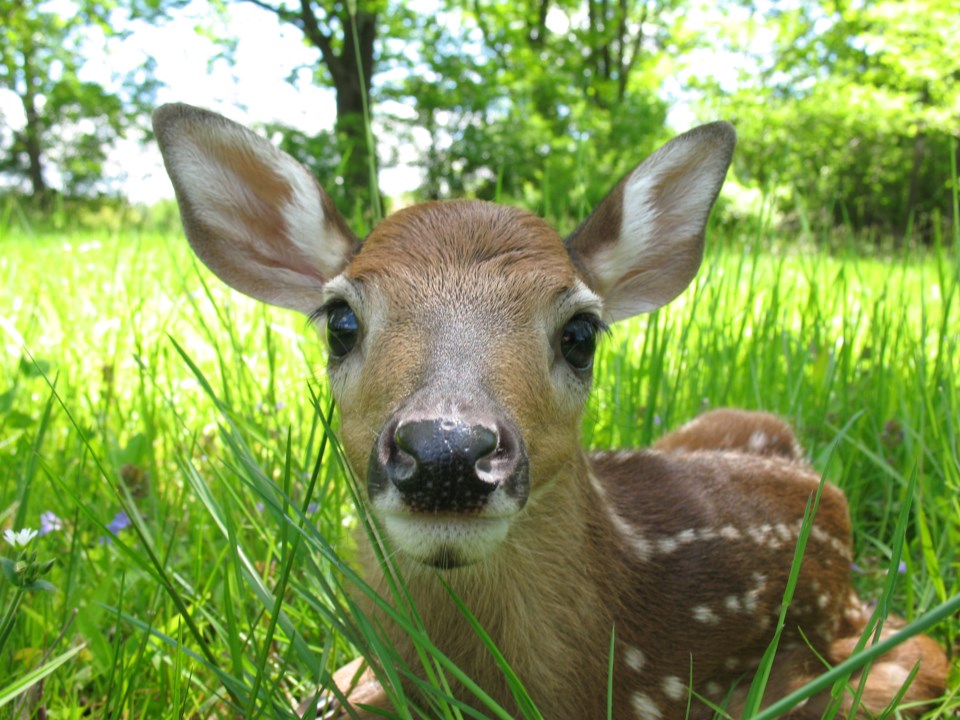If you see a fawn hiding by itself, don’t assume it’s an orphan.
While they may look helpless and scared, all curled up in tight little fawn-balls, they may simply be waiting for their mothers to return. Fawns are unable to follow their mothers for the first two weeks, and therefore they spend the majority of their time alone. Mother deer only come back a few times a day to feed their young.
The BC SPCA reports that they receive countless calls about fawns hiding by themselves in backyards, parks, and meadows. Well-meaning people often bring these babies into shelters, thinking that they are rescuing orphans. Sadly, many of these fawns are simply waiting for their mother’s return.
And while the BC SPCA’s Wild Animal Rehabilitation Centre (Wild ARC) is often able to reunite fawns with their mothers, it is better to leave them alone in the first place. Fawns are just cat-sized when they are born and may appear small and weak — this does not mean that they are sick or malnourished.
With this in mind, hiding quietly is a fawn’s best strategy to avoid attracting predators. If you see a fawn crying or wandering, that means they are in trouble, but hiding is likely a positive sign.
If you’re worried the fawn has been abandoned or orphaned, check on them from a distance over the next 24 hours.
You’ll need to contact a wildlife rehabiliator if the fawn:
- hasn’t moved from their hiding spot in 24 hours
- starts crying
- starts wandering aimlessly
- looks injured
- follows you
- is in an unsafe location
If the fawn needs help, immediately contact our Provincial Call Centre at 1-855-622-7722 to help you find a wildlife rehabilitator.



